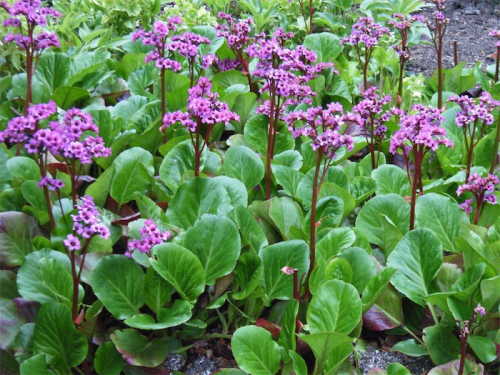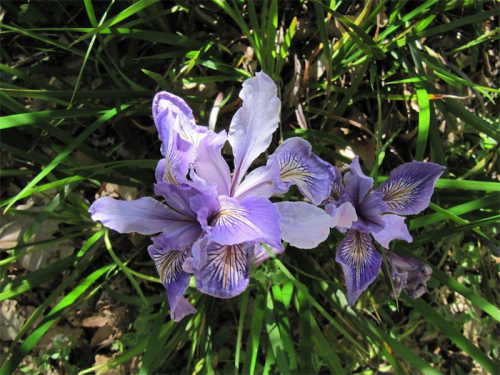
NOW is the time to plant for a winter floral display; particularly after the soaking rain, the roots will become established before winter.
Some of the late-autumn flowering plants often continue into winter depending on the arrival of frost.
This doesn’t mean the garden is naked of colour in winter, so here are a few suggestions for perennial plants, all of which can be divided at the end of the season:
- Bergenia cordifolia is commonly called Elephant’s Ears due to the leaf size. Very popular in the late 19th and early 20th centuries, it has largely gone out of fashion. This remarkable plant, which comes from Siberia and Mongolia where temperatures drop to minus 50C, will tolerate our full sun and extreme frost. The large, heart-shaped leaves are a feature in their own right and its flowers appear as panicles of rosy-red or pink flowers on long 30-40cm stems during winter and into the early spring.
- A favourite of mine is the winter-flowering iris with an unpronounceable name, Iris unguicularis (Syn. I stylosa). It is often not grown to its full potential as the flowers are usually lost amongst the massive grassy foliage. To overcome this, remove all the foliage within 15cm of the ground (and it’s not too late to do this) to encourage sunlight into the plant. The plant is at home in full sun or shade and the delicate fragrance of the lavender-mauve flowers holds well for bringing indoors. Always pull the flowers off from the base of the stem, rather than cutting.

The deliciously fragrant flowers of the Winter Iris. - Helleborus, is commonly called Winter Rose, although no relation to roses except the flowers are similar to old-fashioned roses. These are treated the same way as Winter Iris, by cutting back the leaves, although in this case to ground level in autumn. There is a magnificent range of Hellebores with today’s breeding programs. For example, the stunning Helleborus “Anna’s Red” or H. “Ivory Prince” and H. “Penny’s Pink”. Hellebores will arrive at garden centres in the next few weeks.
- Most of us are familiar with Polyanthus, which is a cross between a primrose and cowslip. Renowned for a wide range of colours, they give a lift to gardens on a dull winter’s day. Because of the variety of colours it’s easy to have a themed garden with, say, all white or all purple flowers to complement other plants. The bane of Polyanthus is snail attack, particularly after rain.
This list can be supplemented with winter-flowering annuals such as primulas, pansies and violas. Remember, from the time of planting, most annuals take about eight weeks to full flowering.
This will depend naturally on how well the soil is prepared and regular plant feeding. It is essential to get the roots established by applying a liquid seaweed plant nutrient on a “weakly, weekly” basis; a weak solution once a week. Once established, this can be extended to every few weeks.
Jottings…
- After the recent rain, look out for weeds. Treat with glyphosate if they can’t be pulled or dug out.
- Keep dead heading dahlias to prolong displays.
- Once agapanthus have finished flowering remove the flowers to prevent seeding.
- Plant Nerine bulbs now for autumn/winter flowering, keeping the bulb neck above ground level.
- Continue to dead head and feed annuals such as petunias to encourage autumn flowering.
Who can be trusted?
In a world of spin and confusion, there’s never been a more important time to support independent journalism in Canberra.
If you trust our work online and want to enforce the power of independent voices, I invite you to make a small contribution.
Every dollar of support is invested back into our journalism to help keep citynews.com.au strong and free.
Thank you,
Ian Meikle, editor




Leave a Reply